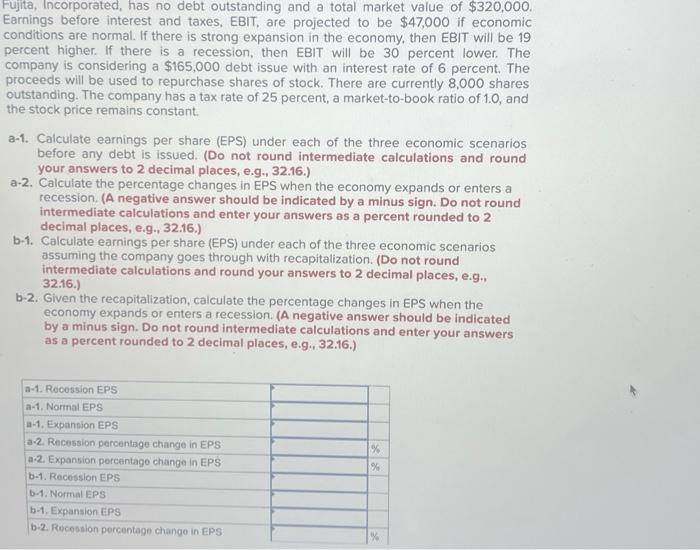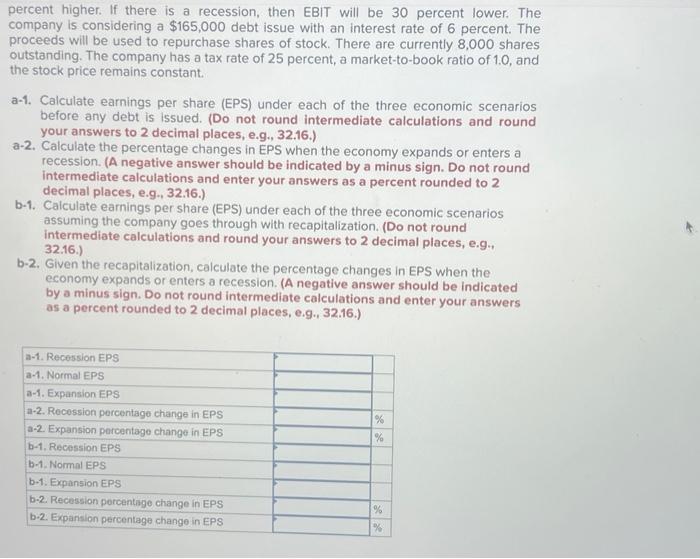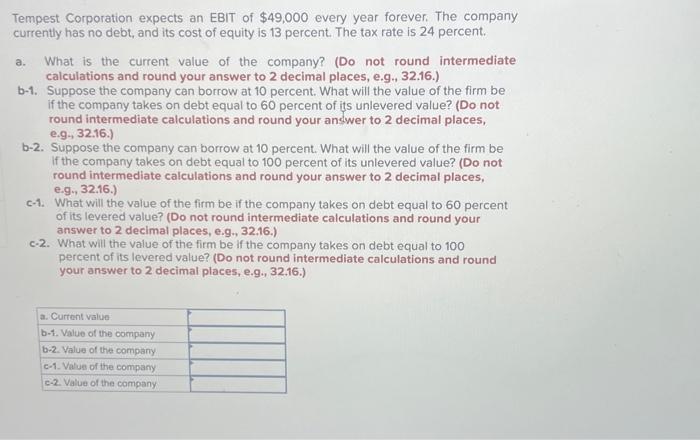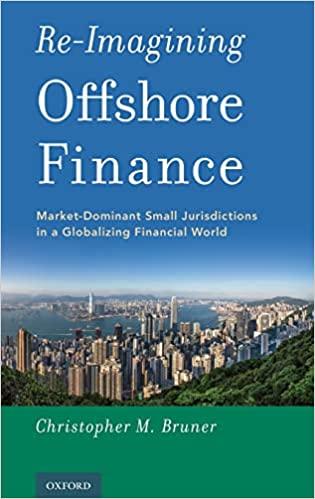help me please
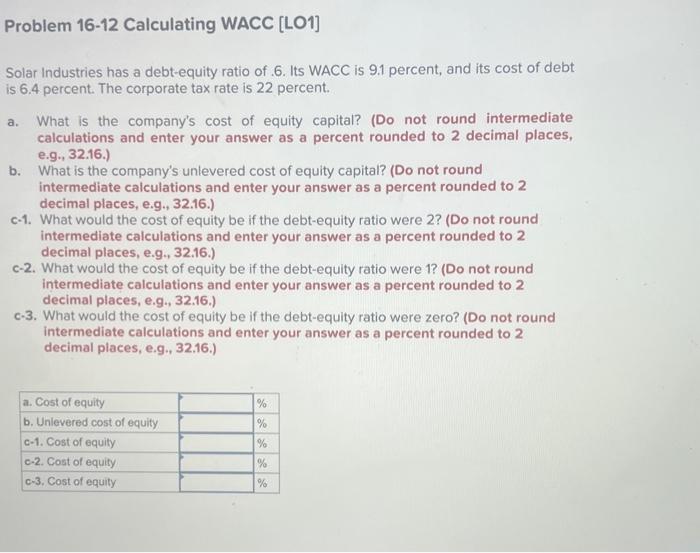
Solar Industries has a debt-equity ratio of .6. Its WACC is 9.1 percent, and its cost of debt is 6.4 percent. The corporate tax rate is 22 percent. a. What is the company's cost of equity capital? (Do not round intermediate calculations and enter your answer as a percent rounded to 2 decimal places, e.g., 32.16.) b. What is the company's unlevered cost of equity capital? (Do not round intermediate calculations and enter your answer as a percent rounded to 2 decimal places, e.g., 32.16.) c-1. What would the cost of equity be if the debt-equity ratio were 2? (Do not round intermediate calculations and enter your answer as a percent rounded to 2 decimal places, e.g., 32.16.) c-2. What would the cost of equity be if the debt-equity ratio were 1? (Do not round intermediate calculations and enter your answer as a percent rounded to 2 decimal places, e.g., 32.16.) c.3. What would the cost of equity be if the debt-equity ratio were zero? (Do not round intermediate calculations and enter your answer as a percent rounded to 2 decimal places, e.g., 32.16.) Fujita, Incorporated, has no debt outstanding and a total market value of $320,000. Earnings before interest and taxes, EBIT, are projected to be $47,000 if economic conditions are normal. If there is strong expansion in the economy, then EBIT will be 19 percent higher. If there is a recession, then EBIT will be 30 percent lower. The company is considering a $165,000 debt issue with an interest rate of 6 percent. The proceeds will be used to repurchase shares of stock. There are currently 8,000 shares outstanding. The company has a tax rate of 25 percent, a market-to-book ratio of 1.0 , and the stock price remains constant. a-1. Calculate earnings per share (EPS) under each of the three economic scenarios before any debt is issued. (Do not round intermediate calculations and round your answers to 2 decimal places, e.g., 32.16.) a-2. Calculate the percentage changes in EPS when the economy expands or enters a recession. (A negative answer should be indicated by a minus sign. Do not round intermediate calculations and enter your answers as a percent rounded to 2 decimal places, e.g., 32.16.) b-1. Calculate earnings per share (EPS) under each of the three economic scenarios assuming the company goes through with recapitalization. (Do not round intermediate calculations and round your answers to 2 decimal places, e.g., 32.16.) b-2. Given the recapitalization, calculate the percentage changes in EPS when the economy expands or enters a recession. (A negative answer should be indicated by a minus sign. Do not round intermediate calculations and enter your answers as a percent rounded to 2 decimal places, e.g., 32.16.) percent higher. If there is a recession, then EBIT will be 30 percent lower. The company is considering a $165,000 debt issue with an interest rate of 6 percent. The proceeds will be used to repurchase shares of stock. There are currently 8,000 shares outstanding. The company has a tax rate of 25 percent, a market-to-book ratio of 1.0 , and the stock price remains constant. a-1. Calculate earnings per share (EPS) under each of the three economic scenarios before any debt is issued. (Do not round intermediate calculations and round your answers to 2 decimal places, e.g., 32.16.) a-2. Calculate the percentage changes in EPS when the economy expands or enters a recession. (A negative answer should be indicated by a minus sign. Do not round intermediate calculations and enter your answers as a percent rounded to 2 decimal places, e.g., 32.16.) b-1. Calculate earnings per share (EPS) under each of the three economic scenarios assuming the company goes through with recapitalization. (Do not round intermediate calculations and round your answers to 2 decimal places, e.g., 32.16.) b-2. Given the recapitalization, calculate the percentage changes in EPS when the economy expands or enters a recession. (A negative answer should be indicated by a minus sign. Do not round intermediate calculations and enter your answers as a percent rounded to 2 decimal places, e.g., 32.16.) Tempest Corporation expects an EBIT of $49,000 every year forever. The company currently has no debt, and its cost of equity is 13 percent. The tax rate is 24 percent. a. What is the current value of the company? (Do not round intermediate calculations and round your answer to 2 decimal places, e.g., 32.16.) b-1. Suppose the company can borrow at 10 percent. What will the value of the firm be if the company takes on debt equal to 60 percent of its unlevered value? (Do not round intermediate calculations and round your answer to 2 decimal places, e.9., 32.16.) b-2. Suppose the company can borrow at 10 percent. What will the value of the firm be If the company takes on debt equal to 100 percent of its unlevered value? (Do not round intermediate calculations and round your answer to 2 decimal places, e.g., 32.16.) c-1. What will the value of the firm be if the company takes on debt equal to 60 percent of its levered value? (Do not round intermediate calculations and round your answer to 2 decimal places, e.g., 32.16.) c-2. What will the value of the firm be if the company takes on debt equal to 100 percent of its levered value? (Do not round intermediate calculations and round your answer to 2 decimal places, e.g., 32.16.)


